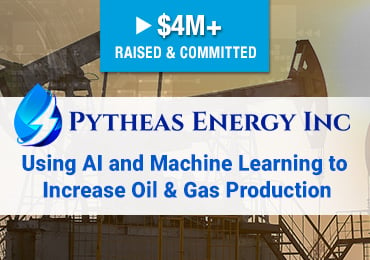Investing in Oil & Gas Companies
Invest in Oil & Gas Stocks
What You Need to Know About Investing in Oil & Gas
When contemplating investing in oil and gas, it is essential to grasp the basic dynamics of this sector.
Four Things to Know Before Investing
- Oil and gas investments can be classified into two main categories: upstream and downstream. The upstream sector focuses on exploration, drilling, and production activities, while the downstream sector involves refining, marketing, and distribution.
- Oil prices can be highly volatile: This price volatility is driven by several factors including global supply and demand dynamics, geopolitical events, and economic conditions. Therefore, investors need to be prepared for sudden price fluctuations that can significantly impact the profitability, and even potential loss, of their investments.
- The environmental impact of oil and gas production: As the world becomes more conscious of climate and ecological issues and the need to reduce greenhouse gas emissions, companies that prioritize environmentally friendly practices and renewable energy sources might be a significant consideration.
- Investing in oil and gas companies may have a positive impact on job creation and overall economic growth: The oil and gas industry is a significant contributor to employment in many areas, providing opportunities for skilled workers in various sectors such as engineering, geology, and logistics. Additionally, the industry contributes to government revenues through taxes and royalties, which can support infrastructure development and public services.
Different Types of Oil & Gas Investments
There are various ways to invest in oil and gas companies. One option is to invest directly in individual stocks of publicly-traded oil and gas companies. This approach allows investors to have direct ownership and potential capital appreciation if the company performs well. However, it is crucial to perform thorough research and analysis before investing in any specific company to assess factors such as financial stability, management credibility, and growth prospects.
Another option is to invest in exchange-traded funds (ETFs) or mutual funds that focus on oil and gas companies. These funds may provide more diversification by investing in multiple companies within the sector. Additionally, ETFs and mutual funds are managed by experienced professionals who may actively monitor and adjust the fund’s holdings based on market conditions, providing investors with a certain level of expertise and risk management.
Investors can also consider investing in oil and gas partnerships or limited partnerships. These investment vehicles may allow individuals to participate in oil and gas projects alongside industry professionals. This approach can provide investors with potential tax benefits and the opportunity to generate income from the production of oil and gas reserves.
The Benefits of Investing in Oil & Gas Companies
Investing in oil and gas companies might offer several benefits for investors. Firstly, these companies often generate substantial profits due to the global demand for energy. As emerging markets develop and industrialize, the need for oil and gas is expected to rise, potentially leading to increased revenues for companies operating in this sector.
Furthermore, oil and gas companies often times pay dividends to their shareholders. Dividends are periodic cash payments distributed to shareholders as a share of the company’s profits. These dividends may provide investors with passive income and serve as a hedge against inflation.
Additionally, oil and gas investments have historically shown a low correlation with traditional asset classes such as stocks and bonds. This means that including oil and gas investments in a diversified portfolio can potentially enhance overall returns and reduce risk through greater diversification.
Moreover, investing in oil and gas companies could contribute to technological advancements in the energy sector. Some of these companies invest heavily in research and development to improve extraction techniques, enhance operational efficiency, and explore alternative energy sources. By investing in these companies, investors can indirectly support innovation and the transition to a more sustainable energy future.
What are the Different Types of Oil & Gas Companies to Invest in?
Oil and gas companies can be classified into several categories based on their operations and business models.
Main Types of Oil & Companies:
Integrated oil and gas companies: These companies are involved in all aspects of the energy value chain, from exploration and production to refining and distribution. These companies may have a diverse range of assets and business segments, providing exposure to different aspects of the industry.
Exploration and production (E&P) companies: E&P companies focus primarily on finding and extracting oil and gas reserves. These companies are at the forefront of the industry, taking on the risks and rewards associated with exploration activities. This is sometimes referred to as ‘Wild-Cat’ drilling, and the success rate at finding new substantive reserves is actually quite low, but they may offer significant upside potential if they do successfully discover new reserves or operate in regions with highly productive fields.
Midstream companies: These companies play a vital role in the oil and gas industry by transporting and storing petroleum products. These companies own and operate pipelines, storage terminals, and other infrastructure necessary for the efficient transportation and distribution of oil and gas. Investing in midstream companies may provide a more stable income stream due to the long-term contracts and regulated nature of their operations, but their growth prospects have less upside, and also less risk, than the exploration companies.
Downstream companies: Downstream companies are involved in refining crude oil into various refined products, such as gasoline, diesel, and jet fuel. These companies may profit from the price differential between crude oil and refined products. Investing in downstream companies can be advantageous during periods when crude oil prices are low, as refining margins tend to widen.
The Risks of Investing in Oil & Gas Companies
In conclusion, investing in oil and gas companies may offer potential rewards, but it also comes with its fair share of risks. It is crucial for investors to conduct thorough research, assess their own risk tolerance, and diversify their portfolio intelligently. By doing so, investors can navigate the ever-changing dynamics of the oil and gas industry and potentially benefit from the opportunities it presents.
Current Oil & Gas Investment Opportunities:
Unfortunately, we don't have any active oil & gas investment opportunities at this time.
Get alerted when a new opportunity becomes available:
Past Oil & Gas Investment Opportunities:

Offering Name: Nevada Canyon Gold
Raise type: Reg-A

Offering Name: Durango Gold
Raise type: Reg-CF

Offering Name: Pytheas Energy
Raise type: Reg-CF
Equifund Member Testimonials:










Want to unlock the potential wealth building power of private market investing?
Join the Private Market Insider below:
Learn more about how to invest in oil & gas:
Investing in Oil Companies: Benefits and Risks
Investing in the energy sector, particularly in oil companies, offers investors the opportunity to participate in the main driver of the world economy.

